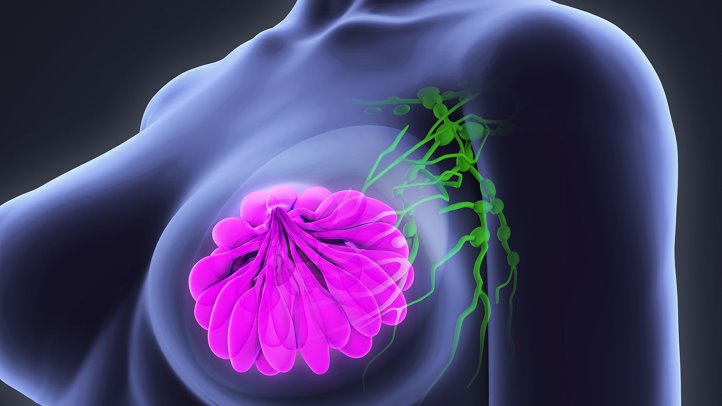One of the best ways for women over 40 to detect breast cancer is an annual mammogram.
Until there is a cure for breast cancer, early detection practices like mammograms, clinical breast exams, and breast self-exams remain some of the most important ways to catch breast cancer early and increase survival rates. Tumor size upon detection, and therefore which cancer stage you are classified in, greatly effects prognosis.
According to the American Cancer Society, the 5-year survival rates decline quickly as breast cancer proceeds to the next stage:
Stage 0 – 93% 5-year survival rate
Stage I — 88% 5-year survival rate
Stage IIA — 81% 5-year survival rate
Stage IIB — 74% 5-year survival rate
Stage IIIA — 67% 5-year survival rate
Stage IIIB — 41% 5-year survival rate
Stage IIIC — 49% 5-year survival rate
Stage IV — 15% 5-year survival rate
STAGE 0 BREAST CANCER
Breast cancer stages start at 0, meaning the abnormal cancerous cells are still within the original site of the breast where they started. This means they are non-invasive.
STAGE I BREAST CANCER
Stage I occurs when the cancer cells break through the original site and invade surrounding tissue. At this stage, the tumor is just under or at 2 cm (.787 inches). The cancer is still within the boundaries of the breast. Stage I contains two subcategories.
Stage 1A: there is no lymph node involvement.
Stage 1B: there are micrometastases (minute spreading out) in 1 to 3 lymph nodes.
A 26-year-old health teacher who got her Stage I breast cancer diagnosed as a result of the Maurer Foundation breast health education programs.
STAGE II BREAST CANCER
Stage II also has two subcategories.
Stage IIA: the tumor is more than 2 cm but smaller than 5 cm (1.96 inches) with lymph node involvement.
Stage IIB: the tumor is larger than 2 cm, but without lymph node involvement or larger than 5 cm but not attached to the chest wall and still without lymph node involvement.
When a tumor is discovered between stages I and II, the chances for successful treatment is at its highest, as it is still contained locally.
STAGE III BREAST CANCER
Stage III has three subcategories.
Stage IIIA: the tumor is less than 5 cm, spread to 5-9 lymph nodes but has not spread to distant sites.
Stage IIIB: the tumor has grown into the chest wall or skin, but without lymph node involvement or up to 9 axillary lymph nodes.
Stage IIIC: the tumor can be any size, spread to 10 or more lymph nodes in areas such as under the clavicle, above the clavicle, enlarged the mammary lymph nodes.
At this level the cancer cells are beginning to reach out beyond the breast. Some lymph nodes have been invaded; the tumor may or may not have attached itself outside the breast.
STAGE IV BREAST CANCER
Stage IV is the advanced stage where cancer has spread beyond the breast and its adjacent lymph nodes to other organs of the body that may include the brain, lungs or liver. This is also called metastatic cancer. If cancer reoccurs it often is a stage IV cancer.
EARLY DETECTION IS KEY TO SURVIVING BREAST CANCER
If you are over 40, get a yearly mammogram. A recent Swedish Cancer Institute study revealed that women between the ages of 40–49 who’ve had yearly mammograms and subsequent breast cancer diagnosis fare better than those that don’t. All women 18 and over should do a monthly breast self-exam and get an annual clinical breast exam. All lumps are not breast cancer, but as this video points out, you shouldn’t ignore suspicious lumps. In the meantime, look at your lifestyle and do what you can to remove any risk factors you may have. Your health is in your hands.

